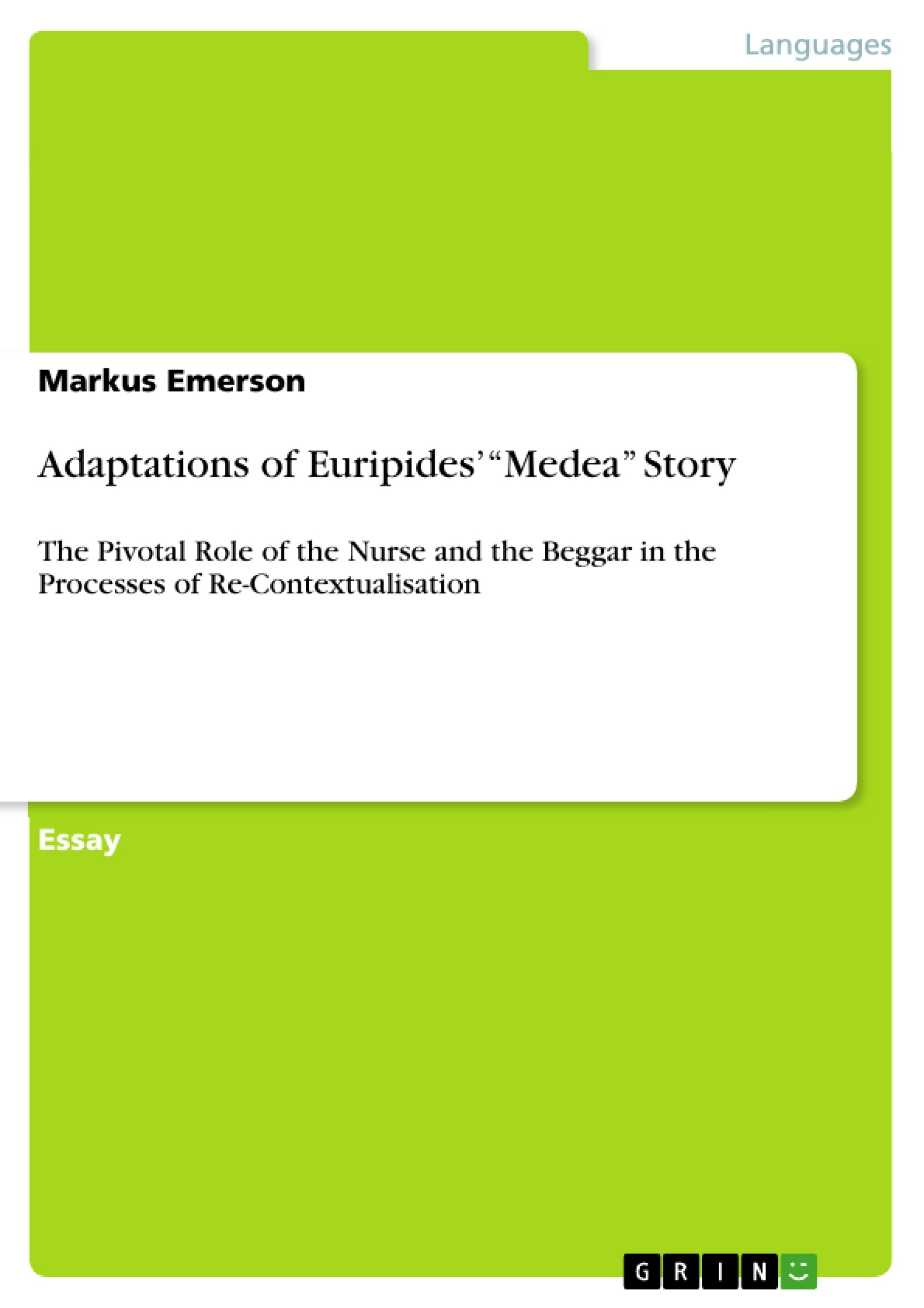Mythical literature depends upon, incites even, perpetual acts of reinterpretation in new contexts, a process that embodies the very idea of appropriation.
Euripides’ play “Medea”, based on a Greek myth about Medea has been made in a sheer endless number of new adaptations for the stage. Betrayed after leaving her home with Jason, Medea kills both her children. This core of the story usually remains but new contexts are explored in the appropriation and re-interpretation of the original. The power of such new adaptations partly comes from a sense of immediacy that is created through a connection between stage and real life of the audiences. This connection is reached through contextualisation of the performance. Through the addition of new layers of meaning, directors of the ‘new’ Medea stories give the plays new contexts in time and space. In the following essay, I argue that this contextualisation and adding of new layers can be reached through the aesthetic choices about marginal characters like the nurse and the inclusion of a figure like the beggar. Their presence adds depth and complexity to the new issues that are explored in the Medea stories.
Inhaltsverzeichnis (Table of Contents)
- Adaptations of Euripides' Medea Story - The Pivotal Role of the Nurse and the Beggar in the Processes of Re-Contextualisation
- The Nurse
- The Beggar
- Conclusion
Zielsetzung und Themenschwerpunkte (Objectives and Key Themes)
This essay analyzes the pivotal role of the nurse and the beggar in re-contextualizing adaptations of Euripides' Medea. It examines how these marginal characters contribute to the creation of new contexts and the exploration of contemporary issues. The essay focuses on the adaptations by Magnuson (African Medea) and Fleishmann (Medea) to illustrate how these figures enhance the credibility and complexity of the plays.
- The importance of marginal characters in re-contextualizing adaptations
- The role of the nurse in providing an insider perspective and facilitating local reference
- The significance of the beggar in offering a critical and detached perspective on social and political issues
- The impact of these characters on the audience's understanding and interpretation of the play
- The connection between the play and contemporary social and political contexts
Zusammenfassung der Kapitel (Chapter Summaries)
The essay begins by introducing the concept of re-contextualization in mythical literature and how adaptations of Euripides' Medea explore new contexts through the addition of new layers of meaning. The essay argues that the figures of the nurse and the beggar play a pivotal role in this process.
The first section focuses on the figure of the nurse, highlighting her importance as an additional voice and narrator in most Medea versions. The essay analyzes her role in both Magnuson's African Medea and Fleishmann's Medea, demonstrating how her presence and language contribute to the creation of new contexts. The essay explores how the nurse's insights, detached perspective, and connection to the main characters enhance the audience's understanding of the play.
The second section examines the figure of the beggar in Magnuson's African Medea. The essay analyzes his role as a secondary chorus, offering a critical and detached perspective on the events taking place in the play. The essay explores how the beggar's presence and commentary contribute to the depiction of the complexity of society and the exploration of social and political issues.
Schlüsselwörter (Keywords)
The main keywords and focus topics of the essay include: re-contextualization, adaptations of Euripides' Medea, marginal characters, the nurse, the beggar, new contexts, contemporary issues, social and political commentary, local reference, audience interpretation, and the connection between the play and contemporary social and political contexts.
- Citation du texte
- Markus Emerson (Auteur), 2011, Adaptations of Euripides’ “Medea” Story, Munich, GRIN Verlag, https://www.grin.com/document/310564




